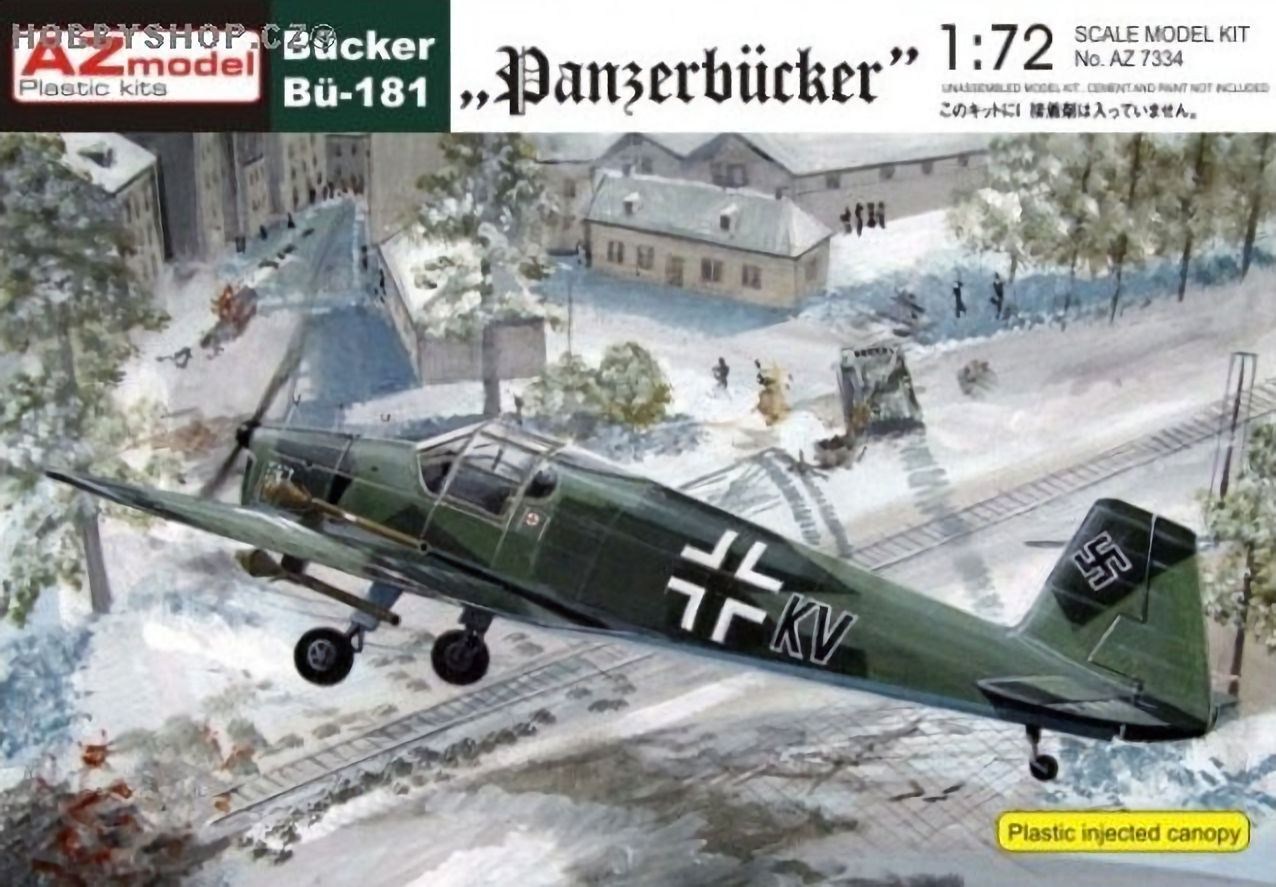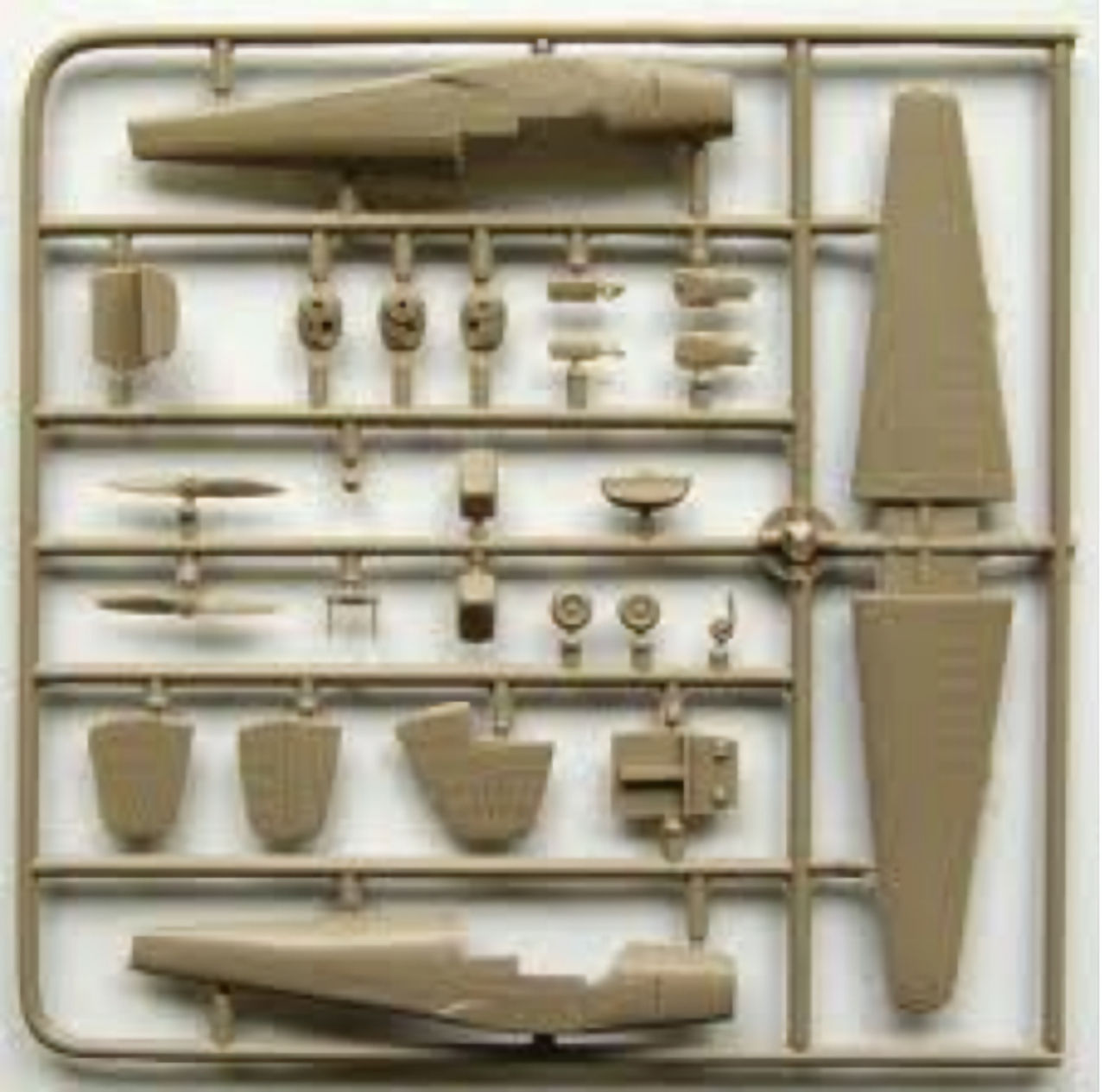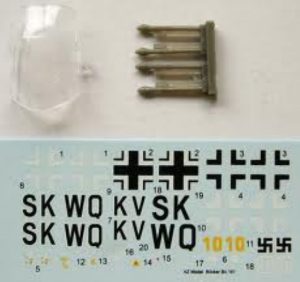Eine Kleine Krautprojekt
Celebrating a day off in the big smoke I wandered into Showcase Models to see what John had on the shelves. I came upon the AZ 1/72 Bucker 131 with conversion parts for the ‘Panzerbucker’. These consisted of four wing-mounted ‘Panzerfaust’ RPGs fired by a cable from the cockpit. About 150 such conversions of this trainer were made and the aircraft has a brief but interesting history.
AZ Models make a range of short-run injection moulded aircraft models, mostly in 1/72 scale but with a few obscurities in 1/48 as well. This little model is of historical interest as it shows the limits of desperation reached by the Luftwaffe in the closing days of the war.

HISTORY
The idea of equipping a basic trainer with anti-tank rockets is pretty desperate. I recall reading that in 1940 an equally desperate proposal to use requisitioned Tiger Moths and Miles Magisters as light bombers was seriously entertained in the event of a German invasion of Great Britain.
The Bϋ 131 basic trainer was converted to an anti-tank aircraft by mounting four infantry Panzerfaust recoilless anti-tank projectiles, one above and one below each wing. These were fired by pulling a cable in the cockpit. About 150 such conversions of this trainer were made. The aircraft has a brief but interesting history, recounted in Midland Publications Schlactflieger.
In March 1945 trials were carried out to ascertain the feasibility of the project and shortly afterwards a call was issued for volunteer crews to fly Bϋckers as anti-tank aircraft. In April 1945 sufficient personnel and aircraft were assembled to form 1, 2 and 3 Panzerjagdstaffeln.
The operations of these units are, unsurprisingly, poorly documented – ultimately eleven Staffeln were designated although reorganisations meant that (probably) only five Staffeln became operational. There are records of 3.Staffel in action against American forces in Bavaria. Trucks and soft-skinned vehicles were destroyed but no tanks were claimed. Destruction of abandoned German tanks and aircraft was another mission of these units.

THE KIT
The moulds are pretty clean with a little flash and there is fine engraved surface detail and fabric effect. The sprues for the Bϋ 131 also serve for the Zlin Z-381 and C-106, with optional cowlings, undercarriage legs and props. The shape looks pretty good by my references.
There are a few bits you have to make yourself (exhaust stubs, sighting wires) and I used a piece of brass wire in some aluminum tube to mount the prop. The Panzerfaust rockets and mountings for the Panzerbϋcker are well cast in resin.
As befits a limited run kit there are no locating pins and the flying surfaces are butt-jointed to the fuselage. This is OK – the model is tiny, only 15cm wingspan.
There was a bit of sanding and filling required but not too much and it doesn’t take long to restore the minimal surface detail. The plastic has a few sink marks, but is soft and easily worked. It took only a couple of days to get the airframe together.
The cockpit is basic and the canopy is injection moulded and fairly clear. It doesn’t quite fit and needs staged gluing and clamping. Painting its frame is a bit boring using DIY masks from Tamiya tape. If I had my druthers I would have used the AZ express mask. The rest of the model is quite straightforward.

PAINT AND DECAL
All of the Panzerjäger aircraft were in standard RLM 70/71/65 with the Panzerfaust fittings in RLM 02 and the projectiles in dark yellow. Some aircraft had their national markings and codes oversprayed with camouflage (?RLM 83) to aid concealment. The decal sheet is very nice but the markings silvered a bit. Another gloss coat next time.
SUMMARY
It doesn’t take long to create a replica of this interesting aircraft. I chose a typical scheme – the cover aircraft on the Schlactflieger book.
Well, now that’s done, let’s go and see if those resin bits for Bold Halifax have come from that nice Canadian man…hmmm…Who is that lean bearded figure in Grecian robes standing by the letterbox, looking my way with a stern but quizzical expression?

Mark Pilbeam
February 2013
